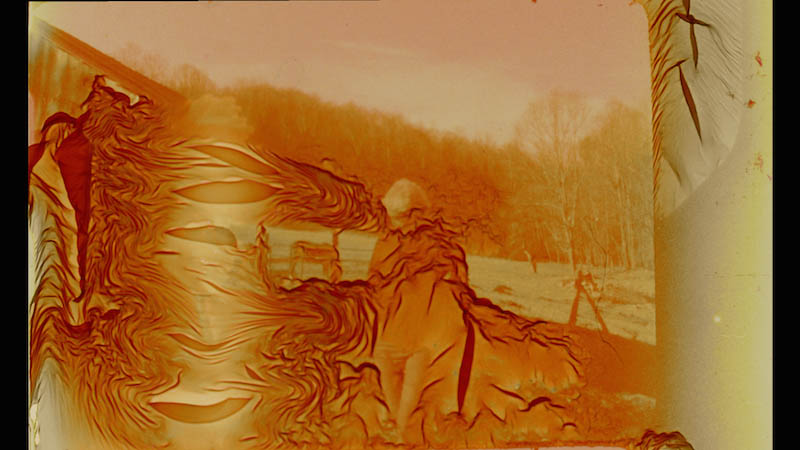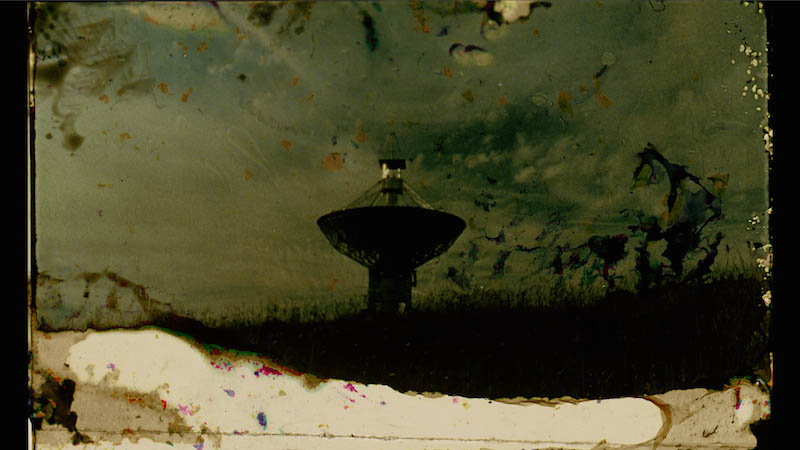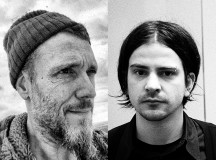Directed by Karl Lemieux –
Otherworldly frequencies and textured images beautifully express the distress of those who suffer from electromagnetic hypersensitivity and must live in exile to find relief from the noise.
GFM:
In Quiet Zone you deal with the subject of electromagnetic hypersensitivity as a documentary. This affliction is fairly unknown, but for those who suffer from it, it’s quite serious. How did you become aware of this problem and decide to make a film about it?
Karl:
I guess it all started when David Bryant and I wanted to work on a short experimental documentary film together. We had been looking for a subject for quite awhile, and at some point, David stumbled upon an article about that subject matter and immediately we thought this could make a really interesting film, so we started doing research
There is a zone in West Virginia, it’s called the National Radio Quiet Zone, and it’s where they do astronomy. In order to do it, they need radio and microwave silence so there’s no interference with their telescope, so people who suffer from electromagnetic hypersensitivity found that place to go and live their life — the place was like their refuge. The syndrome is recognized as a legitimate illness in Sweden, but for the rest of the world it’s considered a mental illness which makes it very tricky for people who suffer from it, and I guess many people suffer from it. A lot of people are not aware of it and there’s no real diagnosis that can be made.

GFM:
How did you go about finding and interviewing your subjects for the film?
Karl:
We did work with a researcher and were in contact with people down there — one of them introduced us to Nicols Fox. All the stories were really interesting, but working in a short film format, we had to narrow it down so we ended up with the voice of only two women. Most of it is Nicols; she was particularly interesting. We went the first time, filmed her, did the interview, and then we went back to interview someone else but ended up having dinner with her again. We spent a lovely night cooking with no electricity in a log cabin and, eventually on the way back, we were thinking wow, we probably have to go back and shoot with her, so we did three trips total. That’s how we got to know her and interview her.
GFM:
The way you visually create the impression of electromagnetic radiation through film is quite interesting. I imagine some of what you did came from the descriptions that Nicols gave you, what she was feeling. Can you talk about how you translated that to film?
Karl:
From the beginning I knew I wanted to work with alternative processing, or end processing techniques for photography and different chemicals and things like that. I had some ideas at first of doing some rotoscopy, it’s an animation technique discovered in the late 1900s by an English photographer and he called the technique bleach etching. But then a French photographer, Jean Pierre Sudre, in the 60s made a new recipe out of it that he called mordançage, and it’s more or less that technique I used to transform the film. You do it after the film is processed — it’s kind of uncontrollable. You can take two film strips and apply the same chemical, and end up with two completely different results. And the timing varies from 30 seconds to 30 minutes so it’s kind of out of control.
GFM:
Interesting and it’s risky as well, because you’re doing it right on the film?
Karl:
Exactly.
GFM:
You co-directed this film with, David Bryant, who also did the music on the film. How did that work?
Karl:
We’re in a project together, I do visuals for a band called Godspeed You! Black Emperor and he’s the guitar player of that project. We had worked together before; he had done the soundtrack for a short film of mine and we were looking to work on something together. So we proposed the project to the National Film Board. The idea was to co-direct the film, which is a very unusual thing, for a composer/sound artist to co-direct the film with the person working with the image, but somehow the idea was to write the film together. Of course he was mostly involved in the sound, but also got involved in the visual, I got involved in the sound, so we kind of just worked together more or less on every step.
GFM:
What has your experience working with the NFB been like?
Karl:
Some of the first experimental films I’d ever been exposed to were by Norman Mclaren, he was a fantastic filmmaker. That place in itself, like the animation studio over there, it was quite a big deal to go and work there, there’s such a rich history with so many other filmmakers. Quiet Zone is my second film with the NFB and I think there’s great things going on there.

